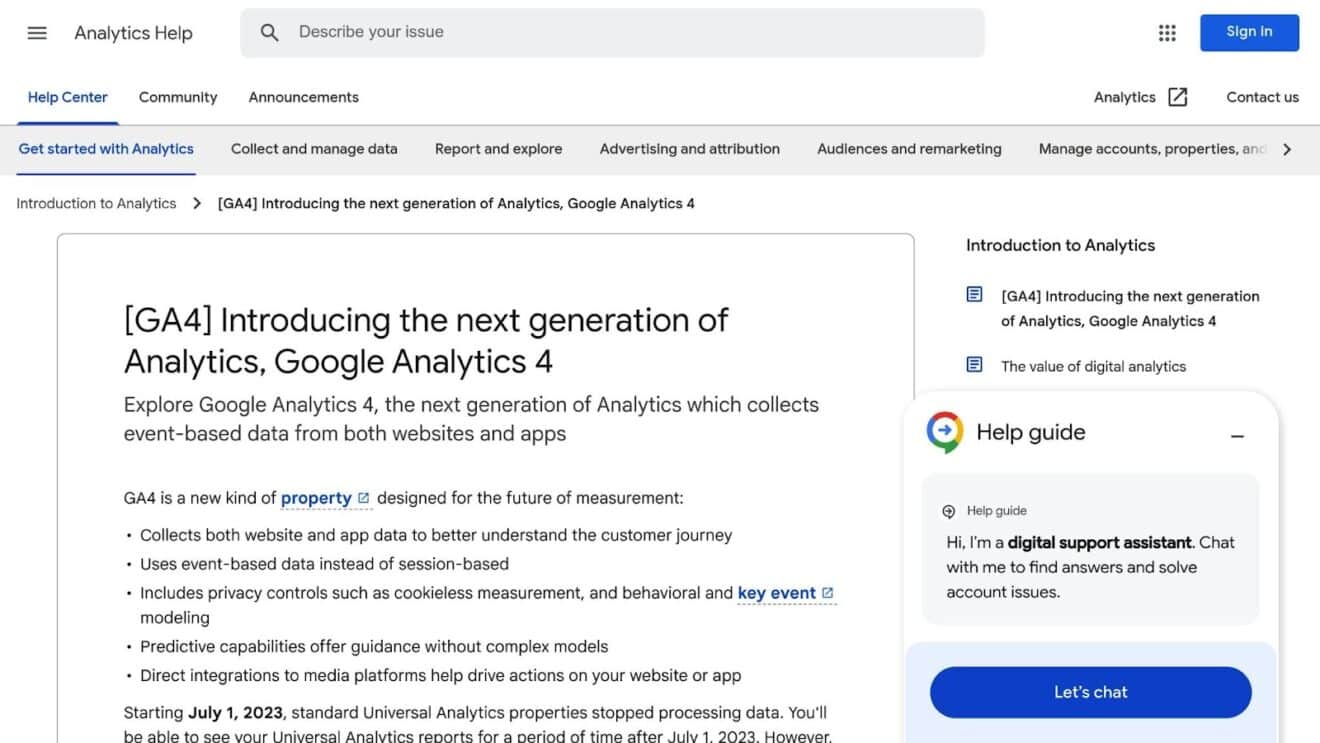
How to create a data-driven marketing strategy in 2025

Ready to revolutionise your marketing in 2025? You’re missing out on serious revenue if you still trust gut feelings over facts.
This guide will change your approach to marketing plans with data-powered strategies that turn numbers into your marketing superpower.
What is data-driven marketing & why does it matter?
Data-driven marketing means making decisions based on real customer information rather than hunches. It’s like having a conversation with your customers without them being in the room. By analysing their behaviours and preferences, you create personalised experiences that feel magical to them but are simply smart business for you.
Why bother? Personalisation has always been known to boost purchase rates. Current figures estimate it can increase purchases by up to 80%.
Feeling dubious? Companies like Banner Health have slashed costs by 74% by using analytics to predict their marketing output.
In today’s crowded marketplace, the difference between being ignored and being adored often comes down to how well you understand your audience—and that understanding comes from data.
Things you should know (phrases everyone is talking about)
- Privacy regulations: 82% of marketers now rely on first-party data rather than third-party data; you should explore it too.
- AI integration: 93% of marketers invest in AI tools; investing in tools will get you further.
- Complex customer journeys: For complex journeys, it’s now estimated a consumer needs 20-500 touchpoints per journey to make a purchase
1. Build your data strategy framework
Before making your strategy, you need information. Here’s how to go about getting it:
Setting marketing goals and metrics
Start by defining clear, measurable marketing objectives that align directly with your business goals.
Ideally, you should focus on metrics such as conversion rates, cost per lead, customer acquisition cost (CAC), and marketing ROI.
Research shows that responding to leads within 5 minutes can increase conversion rates by as much as 900%.
You might not always be able to hop on an email or call that fast, but recently, teams using advanced analytics have also reported up to a 20% improvement in marketing ROI. So, simply switching your tactics to a more data-led approach can have great returns.
Once your goals are set, evaluate your current data sources to ensure they can support these objectives. You’ll never know if you’re heading in the right direction if you never track the right information.
How to check current data sources
Where you get your data on matters. To get started, focus on these key data sources:
- Get first-party data. You can gather this from CRM systems like Salesforce or Zoho, messaging platforms, website analytics, and transaction records from POS systems
- Gather customer interaction records from all touchpoints. You can track this in internal customer software or using out-of-the-box features from platforms like Metorik or Shopify.
- Partner with marketing performance metrics, including campaign results and channel attribution. You’ll get these from places like TripleWhale or Google Analytics.
- Track sales and customer data, such as conversion rates and revenue tracking
Combining these sources provides a strong foundation for your strategy and will give you a wider picture of what is going on.
You might want to take all of these sources and feed them into a singular dashboard for a better understanding of how platforms and customer touchpoints interact.
A note on Google Analytics 4

Google Analytics 4 (GA4) uses an event-driven model that offers a more detailed look at user behaviour across platforms. Some of its standout features include:
- Tracking user behaviour across devices and platforms
- In-depth funnel analysis to identify where users drop off
- Custom audience segmentation based on behaviour and demographics
- Data-driven attribution modelling to optimise budget allocation
By integrating tools like GA4, you can turn raw data into actionable insights that support your broader data strategy. Google Analytics 4 is one of the most popular platforms for websites because of how powerful its data collection is while remaining free. It’s worth a look.
Meeting data privacy requirements
With 82% of marketers increasing their use of first-party data, staying compliant with privacy regulations is a must. But what does that mean?
You can help ensure compliance by:
- Implementing consent mechanisms for data collection. Ask people for their consent before you use their data.
- Maintaining transparent policies about how data is used. Clearly explain what you are using it for.
- Regularly auditing how data is handled. Every month, check where data is being stored, who has access, and when it is purged.
- Securing data storage with strict protocols. This means keeping an eye on the security of the tools you use to store information.
2. Add AI to your marketing stack
AI’s role in marketing has grown rapidly, here are some ways to bake it into your tech stack today:
Predicting customer behaviour with AI
A lot of people understand that large-language models (LLMs) like ChatGPT are generative in that they can generate content. What is often overlooked is the power of predictive analytics and forecasting in these models.
Certain tools can now estimate customer lifetime value with up to 90% accuracy, guiding you where to focus your short-term goals.
Predictive analytics is uncannily accurate with personalisation, too, so you could bake this into your email marketing for the best results. Think about Netflix: its recommendation engine influences 80% of what subscribers watch and saves the company $1 billion annually by improving retention.
Scaling personal marketing with AI
Talking about personalisation, here’s how AI can help you scale personalised digital marketing efforts for better effect:
- Micro-segmentation: This involves dividing your customer base into smaller, more precise groups based on detailed data points such as browsing patterns, interests, and real-time intent rather than just age or location. In the good old days, this was quite a manual process — even if you created automations in tools like Active Campaign, you’d need to vet and clean up data. These days, AI can do the hard graft for you. A great example of this in action is Northmill Bank AB‘s use of ThoughtSpot AI to increase conversions by 30%.
- Cross-channel optimisation: This uses tactics across multiple marketing channels to improve the customer experience and drive incremental revenue, focusing on building a connected sequence of events across various channels. AI is unlocking this for smaller players in the market, but big players have been all over this for a while. Particularly, Coca-Cola Amatil leveraged Trax Retail Execution AI, boosting market share by 1.3% in just five months.
Where to get started with AI in marketing
Start small by introducing AI through pilot projects. This approach lets you test its effectiveness and gather valuable feedback. It’s important that your use of AI doesn’t make processes slower or bog down your team, so our recommended approach is to identify quick and small adjustments that will offer high returns.
Here are some manageable starting points:
- Content optimisation: Use AI to analyse your best-performing content and identify topics, length, and tone patterns that resonate with your audience. Brand voice and tone can be difficult for many businesses to pinpoint — with enough good data, AI can determine this for you within seconds.
- Email marketing enhancements: Implement AI-powered subject line testing to boost open rates and engagement. Most email marketing tools like Klaviyo, Mailchimp, and Active Campaign already have this baked in for you.
- Customer service chatbots: Start with simple, frequently asked questions before expanding to more complex interactions. An integrated LLM tool could field questions for you, saving time for your team.
- Social media scheduling: Use AI tools to determine optimal posting times based on your audience’s online behaviour. Tools like Vista Social, Later and Sprout Social already do this for you.
Begin by setting clear, measurable goals for each AI initiative. What specific problem are you trying to solve? How will you measure success? Once you’ve established a baseline, document your results and use these insights to build support for more ambitious AI projects.
Remember that even small AI implementations can deliver impressive ROI. For example, Spotify’s AI recommendation engine increased listener time by 30% with a focused deployment in one service area.
A key principle of any AI tool is garbage in, garbage out.
What this means for you is that any use of AI should be well thought out and partnered with critical thinking. If an AI tool recommends posting on a Wednesday at 5 pm, your team still need to understand social media enough to know whether that’s a good idea or whether the data the tool is working with has been muddied by something (for example, has a weather event causes an unusual spike in users online?).
3. Use data to improve campaign & marketing plans
Okay, you have your data and some nice AI tools to help you analyse that data. What next? Now, we need to marry that data with a marketing strategy.
Breaking down audience groups
Modern marketing segmentation uses detailed data analysis to deliver more personalised campaigns. For instance, VERB, a direct-to-consumer brand, boosted inbound leads by 36% by identifying wealthier customers and tailoring premium product campaigns to them.
Here’s how you can approach segmentation:
- Gather detailed data using analytics tools and customer surveys. Customer surveys are all too often forgotten but provide some of the most valuable data you can get.
- Pinpoint key variables that align with your marketing objectives.
- Build in-depth customer profiles for each group. Discover their pain points.
- Test and adjust these segments based on performance metrics.
After defining your segments, confirm their effectiveness with targeted A/B testing.
Running effective A/B tests
A/B testing is a reliable way to fine-tune campaigns. Follow these best practices to maximise results:
| Testing element | Best practice | Why this matters |
|---|---|---|
| Sample Size | Use a statistically meaningful audience size | Avoids misleading results |
| Test Duration | Let tests run their full course | Ensures dependable insights |
| Variables | Focus on one element at a time | Clarifies what drives changes |
| Analysis | Leverage AI-powered tools | Speeds up and sharpens insights |
Use the outcomes to make informed tweaks to your campaigns.
Making quick campaign updates
AI-powered platforms like Google Analytics 4 allow for real-time marketing campaign adjustments. Here’s how to stay agile when the data tells you that you need to change:
- Keep an eye on key metrics like bounce rates (aim for 25-40%) and email open rates (industry average is 21.33%). Check these frequently — if not daily, then twice a week.
- Establish clear thresholds for action. What would trigger you to stop or start a new tactic?
- Record each change and its results for future reference. Create change docs for your team to look at.
Measuring results across channels
With 87% of consumers starting their product search online, tracking performance across channels is a must. Email campaigns, for example, can deliver $38 in revenue for every dollar invested. Knowing the value of a channel to your business is important.
What to do:
- Centralise your analytics: Combine data from all your marketing channels into one dashboard your whole team can review in real-time.
- Create unified metrics: Use consistent key performance indicators to evaluate performance and agree as a team triggers that would indicate anomalies.
- Focus on attribution modelling: Understand how each channel contributes to conversions and understand which is most valuable to you. Not every channel is important to every business.
- Standardise your reporting: Produce monthly reports that are comparable across the long term and have actionable insights to make cross-channel comparisons straightforward.
4. Build a data-first company culture
Once you’ve fine-tuned your campaign strategies using data, the next step is fostering an internal culture prioritising data-driven decision-making.
Teaching data skills to teams
Being skilled with data is becoming a must-have talent for marketing teams. You can’t make effective plans if you can’t read or understand data.
Research shows that companies driven by data are 23 times more likely to gain new customers and 19 times more likely to turn a profit.
Your team needs to have data skills. Here’s how to approach this:
- Start by assessing your team’s current skills to pinpoint gaps that need attention.
- To build these skills, focus on both technical and soft areas
- Consider offering training where needed
- Bake data into every discussion and decision you make, even small
| Focus areas | How to build these skills | |
|---|---|---|
| Technical | Data Analysis Tools, R/Python | Vendor-led training courses |
| Strategic | Pattern Recognition, Insight Generation | Interactive workshops |
| Communication | Data Visualization, Storytelling | Team-led presentations |
| Business | ROI Analysis, Market Trends | Cross-functional projects |
Connecting marketing, sales, and data teams
Did you know that only 8% of B2B companies have successfully aligned their sales and marketing teams? Yet, those that do report a 30% drop in customer acquisition costs and a 67% boost in deal efficiency. You’re winning if your sales and marketing departments are aligned.
Here’s how you can bring the teams together:
- Regular cross-team meetings: Schedule weekly sessions to review campaign metrics and upcoming plans. Include both marketers and data analysts to ensure all perspectives are covered alongside sales.
- Shared goals framework: Define KPIs that matter to both teams and track them through a shared dashboard.
- Collaborative content strategy: Use data insights to guide content creation. Engagement rates, for example, can inform eBook topics.
Aligning these teams ensures a more cohesive approach to campaigns and maximises results.
Your action plan for data-driven marketing in 2025
All things considered, now you’re ready to bake data into your marketing strategies. Data-driven marketing consistently delivers 5-8x higher ROI. To create a strategy that works, prioritise these steps:
| Implementation phase | Key actions | Expected outcomes |
|---|---|---|
| Foundation setup | Analytics tracking, CRM integration | Reliable data collection |
| Data collection | First-party data, conversation tracking | Deeper audience insights |
| Tool integration | AI tools, marketing automation | Streamlined processes |
| Personalisation | Dynamic content, targeted campaigns | Increased engagement rates |
